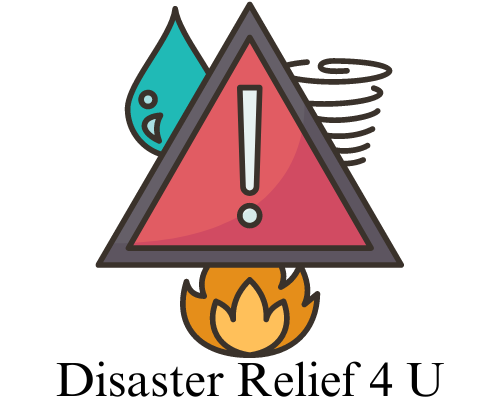Have you heard about the new volcanic eruption mechanism?
You may have heard about volcanic eruptions caused by magma and steam, but have you ever thought about how some eruptions could be triggered by ground collapse instead? This article will delve into the fascinating research conducted by scientists from multiple institutions to describe a new type of volcanic eruption mechanism observed at Kīlauea volcano in 2018.
Understanding the research background
Let’s start by understanding the background of the research conducted by scientists from the University of Oregon, US Geological Survey, and Sichuan University. In 2018, a series of explosive eruptions at Kīlauea volcano in Hawaii puzzled scientists as they did not follow the typical explosive volcanic eruption pattern driven by rising magma or vaporized groundwater. This unique behavior sparked the curiosity of researchers who set out to investigate and understand the underlying eruption mechanism.
Examining the explosive eruptions
The explosions at Kīlauea volcano in 2018, driven by sudden pressure increases due to ground collapse, were like nothing scientists had seen before. They likened the eruptions to a stomp-rocket toy, where plumes of rock fragments and hot gas were blasted into the air. This unprecedented phenomenon raised questions about the traditional understanding of volcanic eruptions and prompted researchers to dig deeper into the eruption dynamics.
Discovering a new eruption mechanism
Through their research, scientists found that the explosive eruptions at Kīlauea volcano were caused by magma draining from an underground reservoir, leading to ground collapse. This collapsing ground increased pressure, forcing gas and rubble through a vent in a mechanism similar to a stomp-rocket. This new eruption mechanism offered valuable insights into the complex processes occurring beneath the Earth’s surface during volcanic activity.
Linking geophysical observations with volcanic plume properties
One of the key findings of the research was the link between geophysical observations and the properties of the volcanic plume in the atmosphere. By analyzing data from the explosions, scientists were able to connect the ground collapsing and pressure increase to the characteristics of the plumes. This connection paved the way for new methods to observe and assess volcanic hazards, enhancing our ability to predict and mitigate potential risks.
Understanding the implications of smaller eruptions
While smaller eruptions may not always grab headlines like massive volcanic explosions, they play a crucial role in understanding the underlying eruption mechanisms. The series of explosions at Kīlauea volcano provided scientists with a clearer picture of magma ascent in volcanic plumbing systems and the geometric complexity involved. By studying these smaller events, researchers can gain valuable insights that contribute to our overall understanding of volcanic activity.
Implications for future research and volcanic hazard assessment
As we continue to unravel the mysteries of volcanic eruptions, the findings from the research on the new eruption mechanism at Kīlauea volcano have significant implications for future studies and volcanic hazard assessment. By linking geophysical observations with volcanic plume properties, scientists have opened up new avenues for monitoring and predicting volcanic activity. The knowledge gained from these explosions can help improve our ability to assess risks and protect communities living near active volcanoes.
Enhancing volcanic monitoring technologies
The insights gained from the study of the unique eruptions at Kīlauea volcano can lead to advancements in volcanic monitoring technologies. By understanding the specific dynamics of explosive eruptions triggered by ground collapse, scientists can develop new tools and methods to detect early warning signs of impending volcanic activity. These technological innovations are crucial for improving our ability to monitor and assess volcanic hazards, ultimately leading to better disaster preparedness.
Improving volcanic hazard assessment models
The new eruption mechanism described by scientists offers valuable data for improving volcanic hazard assessment models. By incorporating the insights gained from the explosions at Kīlauea volcano, researchers can refine existing models to better predict the behavior of volcanoes during future eruptions. This enhanced understanding of volcanic activity can help authorities make informed decisions when it comes to managing volcanic risks and planning for potential disasters.
Collaborative research for a better understanding of volcanic processes
The collaborative nature of the research conducted by scientists from multiple institutions highlights the importance of teamwork in advancing our understanding of volcanic processes. By bringing together experts from different fields, such as geophysics, geology, and volcanology, researchers can pool their knowledge and expertise to tackle complex scientific questions. This collaborative approach not only leads to groundbreaking discoveries, such as the new eruption mechanism at Kīlauea volcano but also sets the stage for future interdisciplinary research in the field of earth sciences.
Conclusion
In conclusion, the discovery of a new type of volcanic eruption mechanism at Kīlauea volcano in 2018 represents a significant milestone in the field of earth sciences. By unraveling the mysteries of explosive eruptions triggered by ground collapse, scientists have broadened our understanding of volcanic activity and its associated hazards. The findings from this research offer valuable insights into the complex processes occurring beneath the Earth’s surface during volcanic eruptions, paving the way for improved monitoring, assessment, and management of volcanic risks. As we continue to explore the depths of our planet’s volcanic systems, the knowledge gained from this study will undoubtedly shape the future of volcanic research and hazard mitigation efforts.
